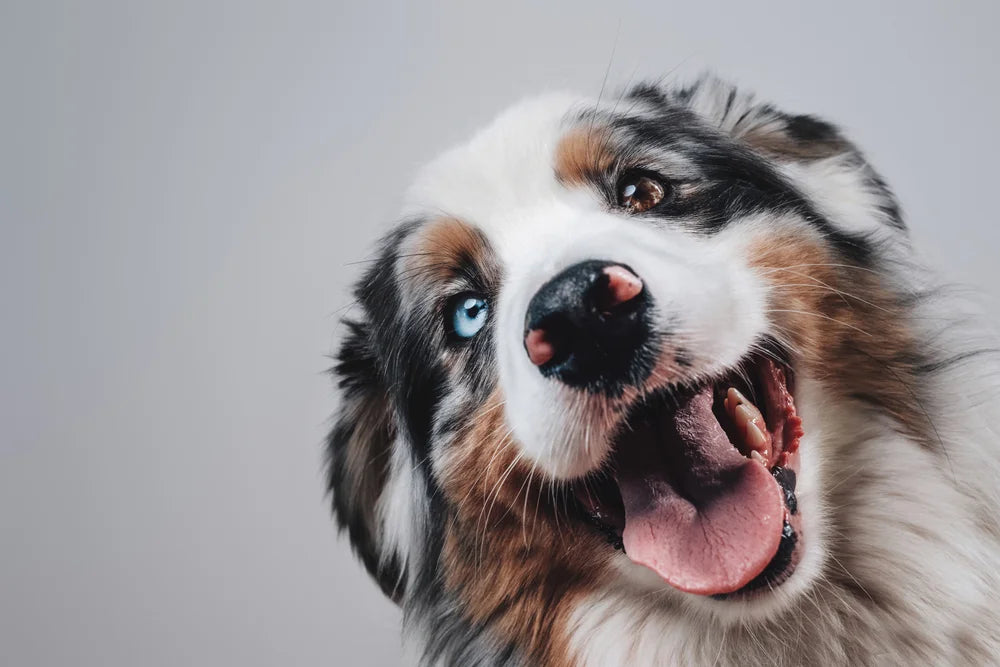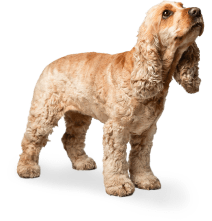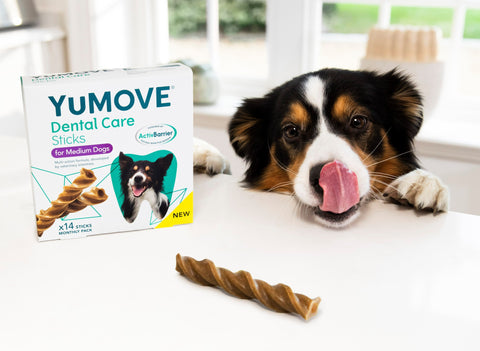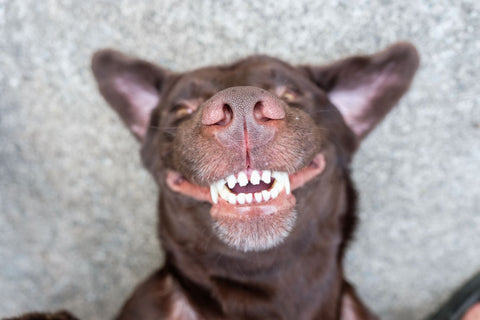

Gingivitis in dogs
Are your pup’s kisses not quite as sweet as they used to be? Bad breath – and even a whiffy coat after a DIY doggy bath – can be signs of gingivitis. But what exactly is gingivitis, and can it be treated or prevented? Here’s what you need to know about this common sign of gum disease in dogs.
What is gingivitis in dogs?
Like many medical terms ending in -itis, gingivitis means inflammation – in this case, of the gums. It’s a symptom of gum disease. A more advanced version is stomatitis, which affects all the soft tissues in the mouth, including the tongue, gums, roof of the mouth and sometimes the throat.
Gingivitis can be both a consequence and a cause of dental problems. If left untreated, it can spread into the tooth socket, leading to periodontal disease. Periodontal disease is inflammation or infection of the tissues that hold the tooth in place and can result in pain, abscesses and, eventually, tooth loss.
Signs of dog gum disease
Because gingivitis is inflammation, red gums are the most obvious sign. But if your pup has dark, spotted gums or won’t let you near their mouth, it can be harder to spot.
Here are some other signs to look out for:
- Smelly breath – or even a whiffy coat
- Drooling or extra saliva
- Pawing at or rubbing the mouth
- Eating more slowly, dropping food or refusing meals
- Bleeding gums or blood-tinged saliva
- Crusting or matted fur around the mouth
- In advanced cases: weight loss, facial swelling or tooth loss
Sadly, many of these signs suggest your dog could be feeling dental discomfort or pain.
What gum disease looks like in dogs
Dog mouths are naturally a little lumpy, bumpy, slimy and even spotty. That’s why it’s helpful to get familiar with what your own pup’s mouth usually looks like. Early gingivitis is often reversible, and noticing other changes – like unusual lumps or growths – early on is important.
If your pup isn’t a fan of having their mouth checked, here is a helpful photo you can use if you manage a quick peek while they’re snoozing:

Causes of gingivitis in dogs
The most common cause of gingivitis is poor dental hygiene. Saliva, food and bacteria combine to form a sticky substance called plaque. Within just 24–48 hours, plaque can harden into tartar (also called calculus).
Once tartar forms, it can’t be brushed away. It creates a rough surface where more plaque sticks and provides a safe place for bacteria to irritate the gums. Over time, this buildup and inflammation can spread, damaging the tissues that hold your dog’s teeth in place. Abscesses, infections and eventual tooth loss may follow.
Other possible triggers include:
- Retained baby teeth or dental injuries
- Breed predisposition, some dogs are just more prone
- Chemical or food irritants
- Kidney disease, which can cause ulcers and gingivitis
- Infectious diseases
- Cancer, especially those affecting the gums or mouth
- Autoimmune conditions, where the immune system attacks the body’s own tissues
How can dental disease affect your dog?
You might think a little plaque is no big deal. And it’s true, many dogs live comfortably with a bit of tartar or mild gingivitis. The problem is, it often gets worse over time.
Spotting it early can reduce the need for more invasive dental work or general anaesthesia, which – while routine – can carry greater risks as dogs get older. If left untreated, serious complications can develop, such as:
- Jaw fractures from severe bone loss
- Painful dental abscesses
- Bacteria entering the bloodstream via inflamed gums

Dog gum disease treatment
Since gingivitis is most often caused by bacteria lurking in plaque and tartar, treatment usually begins with dental work. The earlier you act, the simpler it’s likely to be.
Sometimes, improving your dog’s brushing routine is enough. Other times, a professional scale and polish under anaesthetic – or even tooth extractions – may be needed.
If symptoms suggest another underlying cause, your vet may recommend blood tests or tissue samples to rule out illness or more serious conditions.
How to help keep your dog’s gums healthy
Every little bit helps, but brushing is still the gold standard. Not every dog will accept it straight away, so starting young and building up gradually can make it much easier over time.
Brushing tips:
- Use a tasty, dog-safe toothpaste.
- Start slowly: just rub toothpaste on the gums with your finger or a silicone finger brush.
o Avoid under the nose at first – it’s a ticklish area and may stay off-limits
o Don’t stress about brushing the inside surfaces; chews, special diets and even the tongue can help here - Work up to daily brushing and reward your dog with a game or tummy rub afterwards
If brushing isn’t a safe option – or you’d like to give your dog’s dental routine a little extra support – you could try adding:
- Mouthwash (dog-specific only – never human mouthwash)
- Water or food additives (approved for canine use)
- Dental chews or toys
- Special dental diets, where the kibble’s shape and texture help clean teeth mechanically
Gingivitis might seem like a small concern, but it’s often the first step toward more serious dental problems. With regular care and a close eye on your dog’s oral health, you can help keep gum disease from progressing.



